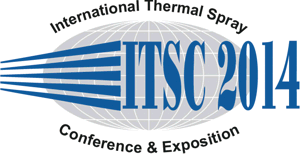
|
3679 |
|
Wednesday, May 21, 2014, Hall F 3:00 PM Suspension Spraying 1 |
|
Suspension plasma sprayed YSZ coatings from monomodal and bimodal feedstock suspensions |
|
Pablo Carpio Cobo / Instituto de Tecnología Cerámica. Universidad Jaume I, Spain Enrique Sánchez* / Instituto de Tecnología Cerámica (ITC). Universitat Jaume I (UJI), Spain Amparo Borrell/ Instituto de Tecnología de Materiales (ITM). Universidad Politécnica de Valencia (UPV), Spain Maria Dolores Salvador/ Instituto de Tecnología de Materiales (ITM). Universidad Politécnica de Valencia (UPV), Spain Rodrigo Moreno/ Instituto de Cerámica y Vidrio (ICV). Consejo Superior de Investigaciones Científicas (CSIC), Spain |
|
Thermal barrier coatings (TBC) protect metallic parts against hot gases and molten salts. They are usually made of yttria stabilised zirconia (YSZ) due to the good mechanical and thermal properties at high temperature of this material. One of the most commonly used techniques to obtain TBCs is the atmospheric plasma spraying (APS). In recent years, coatings comprising nanoparticles have been intensively studied. In the case of TBCs, thermal conductivity and thermal shock resistance have been improved by using nanoparticles. However, nanoparticles cannot be sprayed directly owing to low mass and poor flowability. Spraying suspensions of nanoparticles (or submicro-sized particles) is one of the possible solutions. This method, named suspension plasma spraying (SPS), differs considerably of APS method in spray parameters and thermal histories of the particles during deposition. Therefore microstructure and properties of SPS coatings are different from APS coatings. In this work, YSZ aqueous suspensions were successfully deposited by SPS process. Suspensions were made of nanoparticles, submicro-sized particles and a bimodal mixture of submicro-nanosized particles. Previously, the colloidal behaviour of the different suspensions was studied through zeta potential measurements in order to obtain well-dispersed suspensions that can be easily sprayed. After the optimization of the rheological properties of the YSZ suspensions the spraying performance was studied, focusing on the spraying distance. Finally, the microstructure of the coating were evaluated by FEG-SEM micrographs. In addition, mechanical properties were determined by nanoindentation technique. Different microstructures, coating characteristics and properties can be observed by changing the feedstock suspension. Regarding the spraying distance, it modifies the thermal history of particles, which also affects the coatings microstructure and properties. This work has been supported by the Spanish Ministry of Economy and Competitiveness (MAT2012-38364-C03) and Research Promotion Plan of the Universitat Jaume I, action 3.1 (ref. PREDOC/2009/10). |